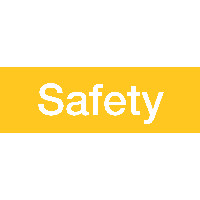12 Ways to Make Small Businesses Safer

An extract from the WorkSafe Victoria website, advises that as a small business operator, you need to be aware of your health and safety responsibilities and identify and control workplace hazards.
The following outlines workplace health and safety hazards which inspectors regularly find during visits to small businesses. It also describes some of the injuries or illnesses which can happen if these hazards are not controlled.
Use the following information to help you identify whether your workplace has acceptable work practices in place or whether there are hazards not being addressed.
1. Protecting young workers and your business
2. Manual handling happens in most small businesses and involves using your body to exert force to lift, lower, push, pull, carry, move, hold or restrain objects or people.
3. Poor housekeeping and poor building maintenance are common causes of workplace injuries, particularly those relating to slips, trips or falls.
4. Overloaded and/or damaged storage, racking and shelving can collapse, causing serious injuries to employees. Employees can also be injured if they are struck by objects falling off shelving.
5. Fire and evacuation plans and procedures are required to help ensure the safety of everyone in their workplace in the event of an emergency.
6. Employers must provide adequate amenities for the welfare and hygiene needs of employees. This includes provisions for effective first aid.
7. Electricity has the potential to seriously injure or cause death. Damaged or faulty electrical tools, equipment and wiring can put employees at risk.
8. Falls from height can leave employees with permanent and debilitating injuries. Falls often occur from roofs, scaffolds, ladders, trucks and mezzanine floors or into pits or holes.
9. Chemicals and fuels in the workplace can be classified as dangerous goods, hazardous substances or both. This includes oxy-fuel gases.
10. Many small businesses use some form of machinery and equipment (commonly referred to as plant). It may be large, fixed machinery or handheld tools. This includes air receivers and boilers, as well as forklifts and mobile plant.
11. Exposure to prolonged or sudden loud noise can cause hearing loss or tinnitus (ringing in the ears). Loud or constant noise at the workplace (e.g. hammering, loud music or high pitched machines) is a major cause of hearing loss.
12. Many buildings built before the mid-to-late 1980s contain asbestos. Inhalation of asbestos fibres is a serious health risk.
For further information on the highlighted items go to:
http://www.worksafe.vic.gov.au/safety-and-prevention/small-business/12-ways-to-make-small-businesses-safer









You must be logged in to post a comment Login